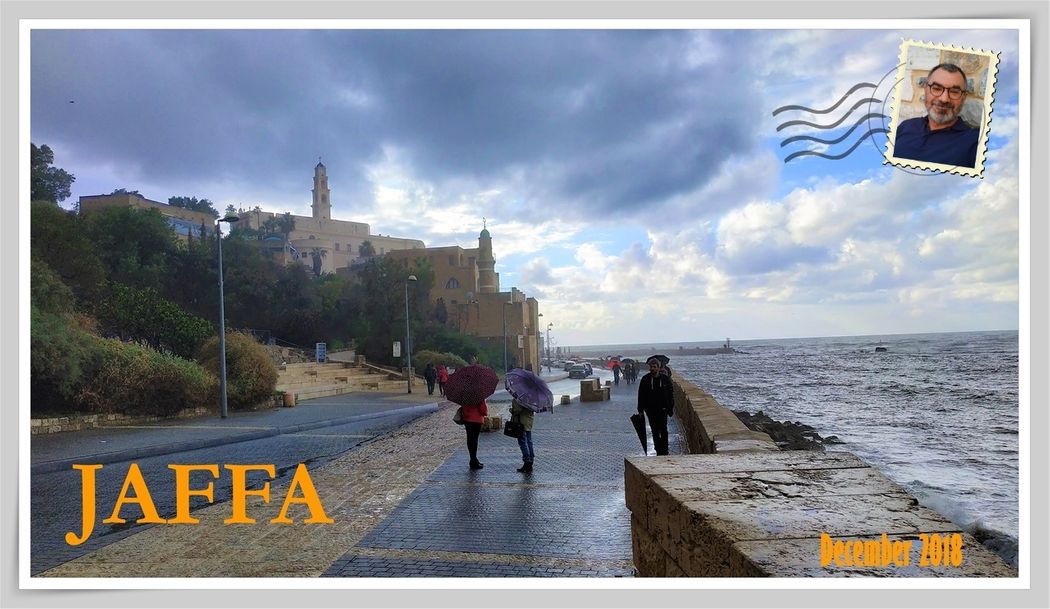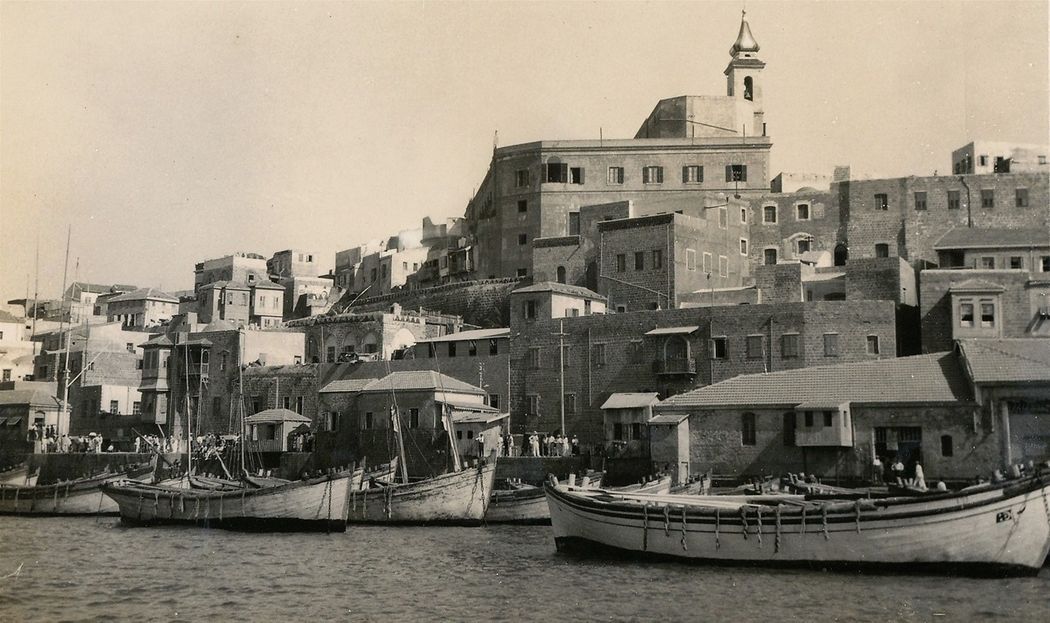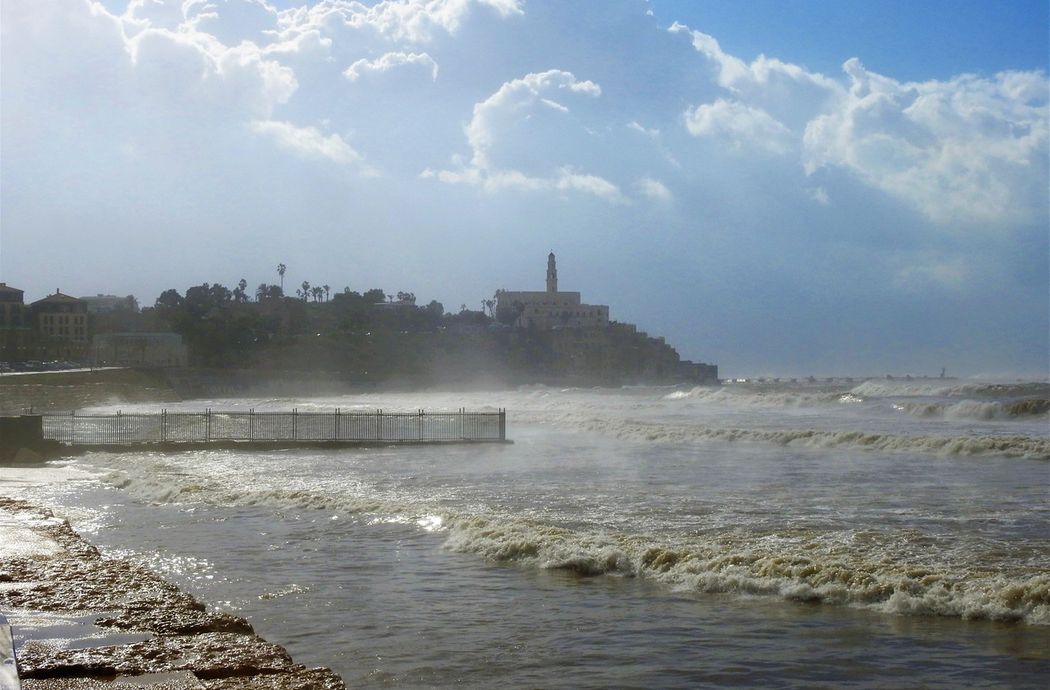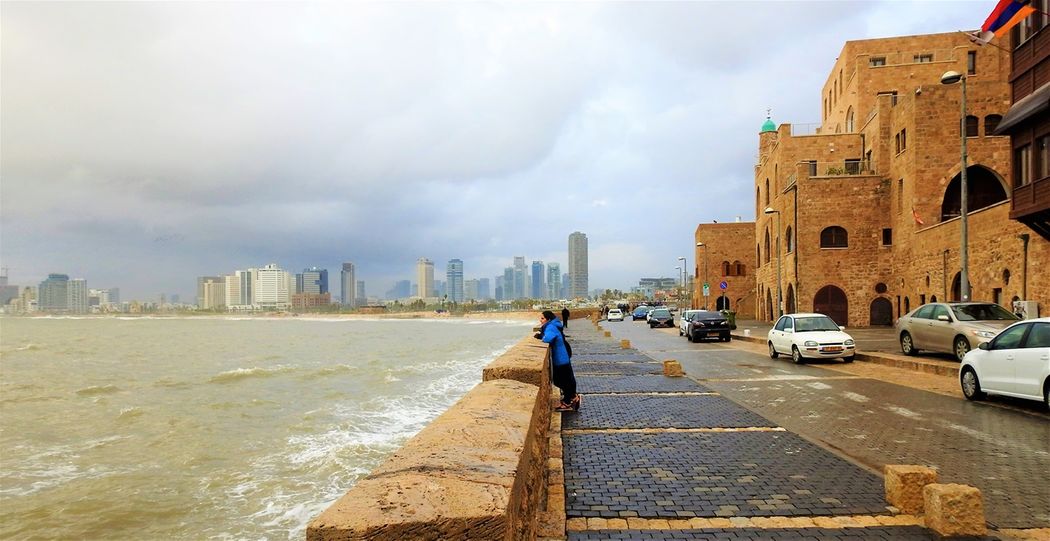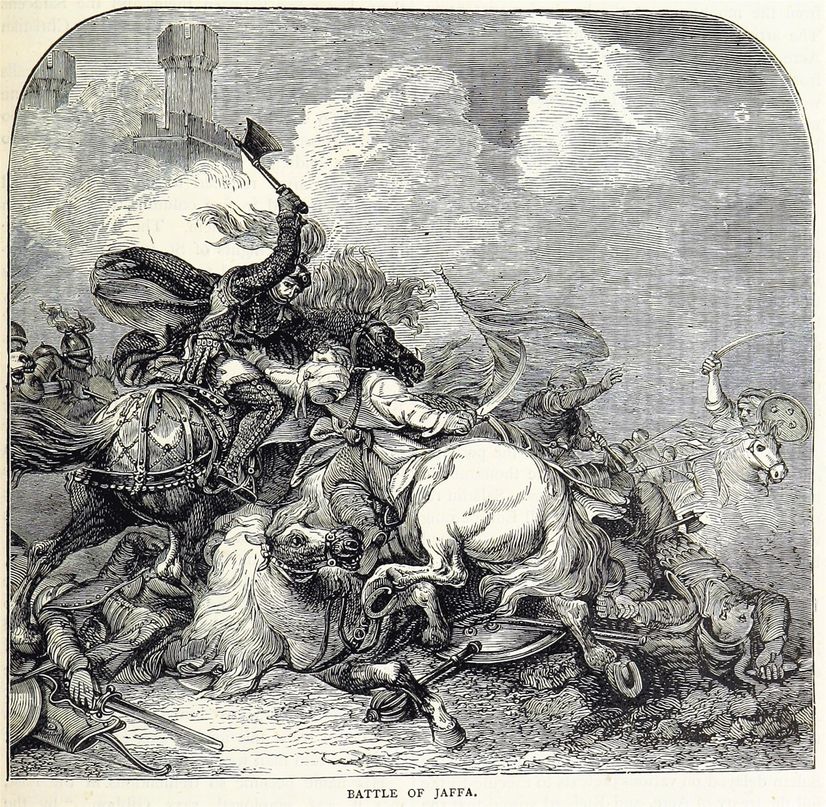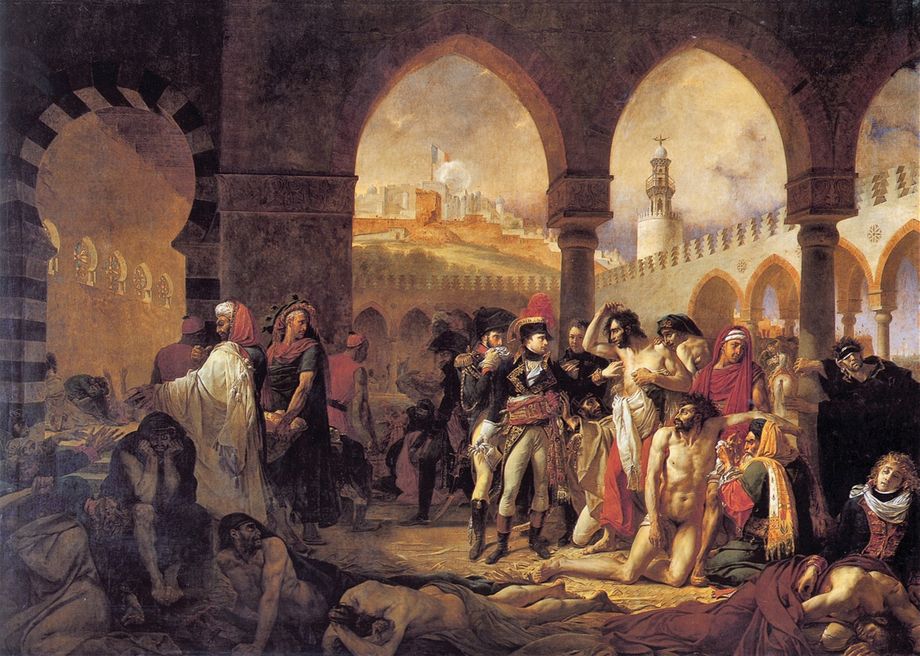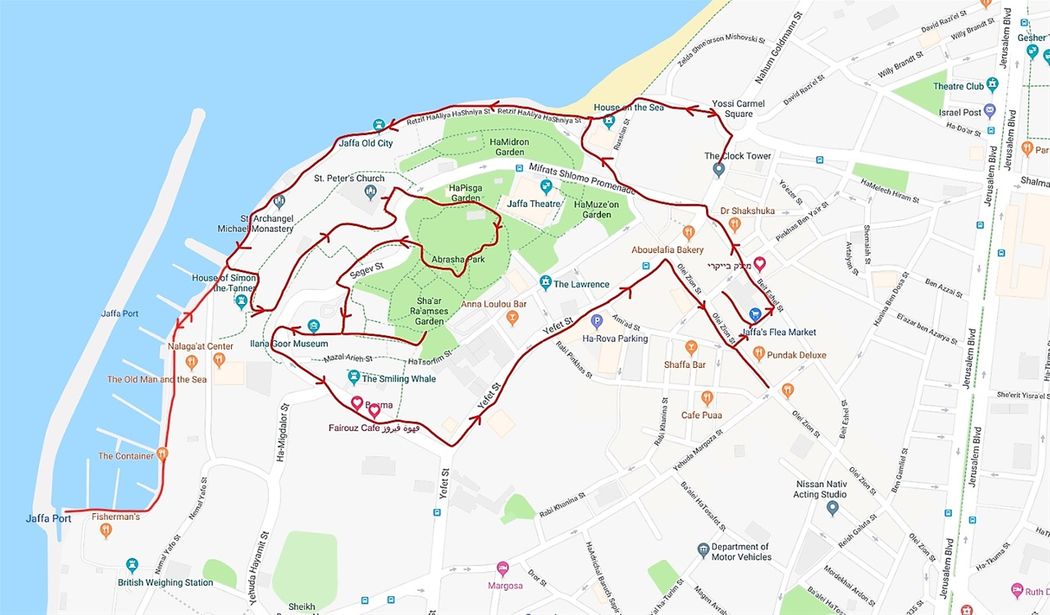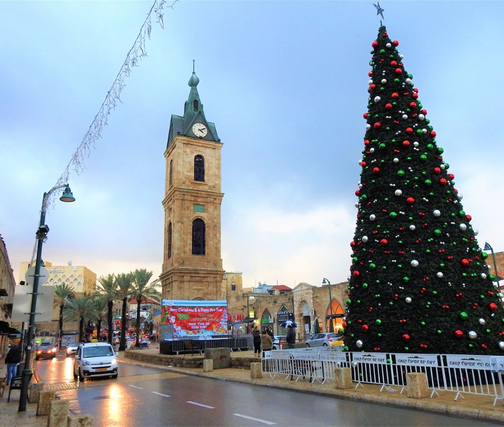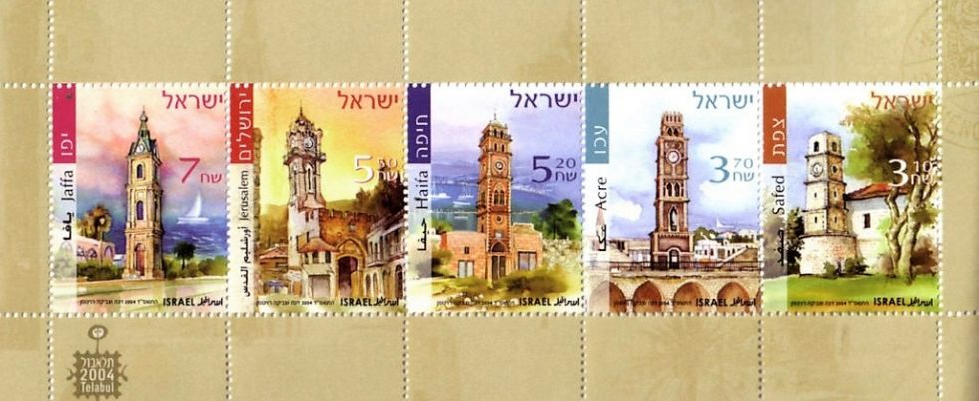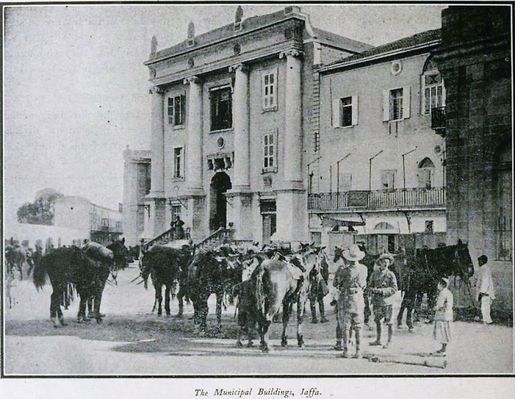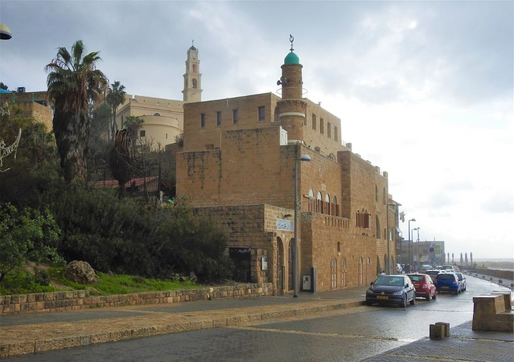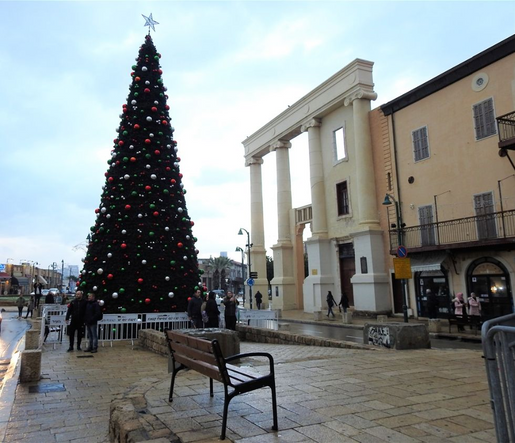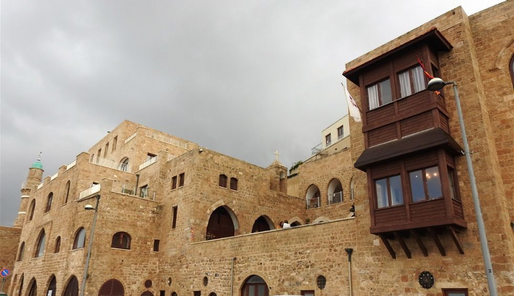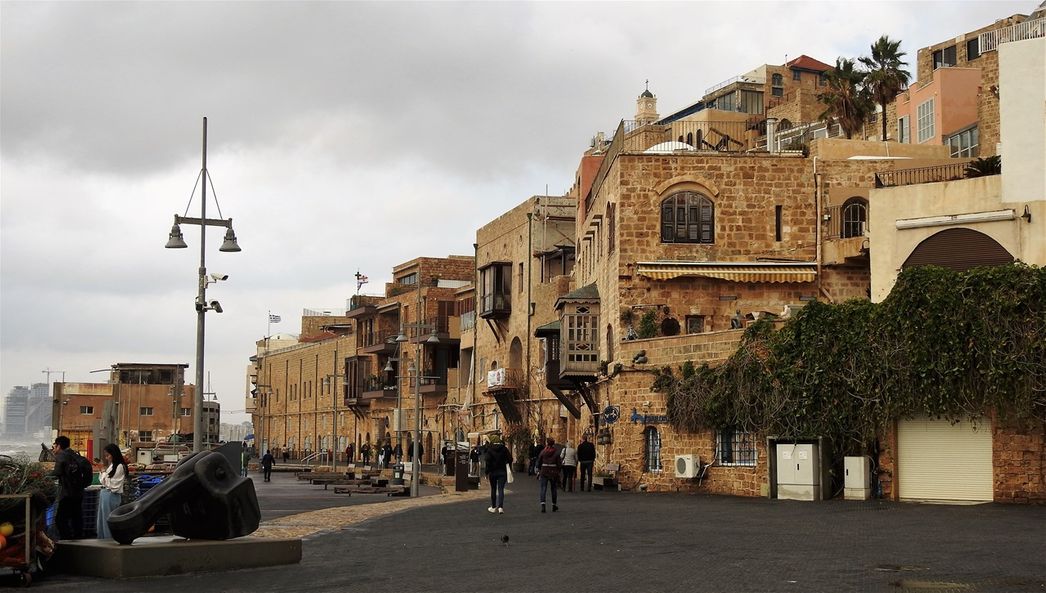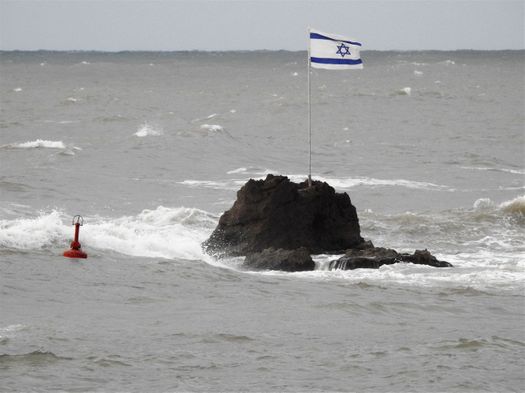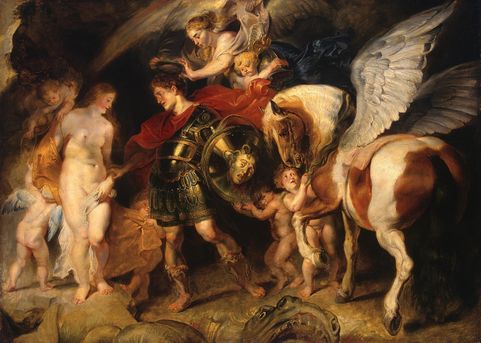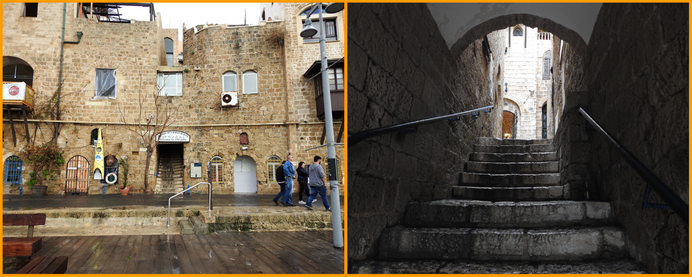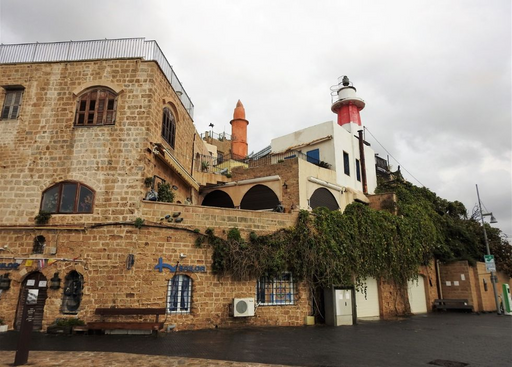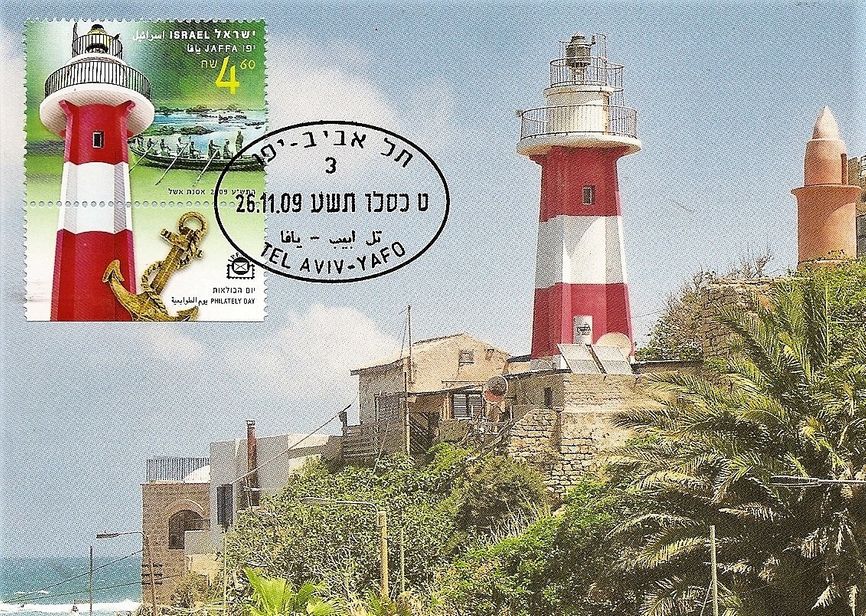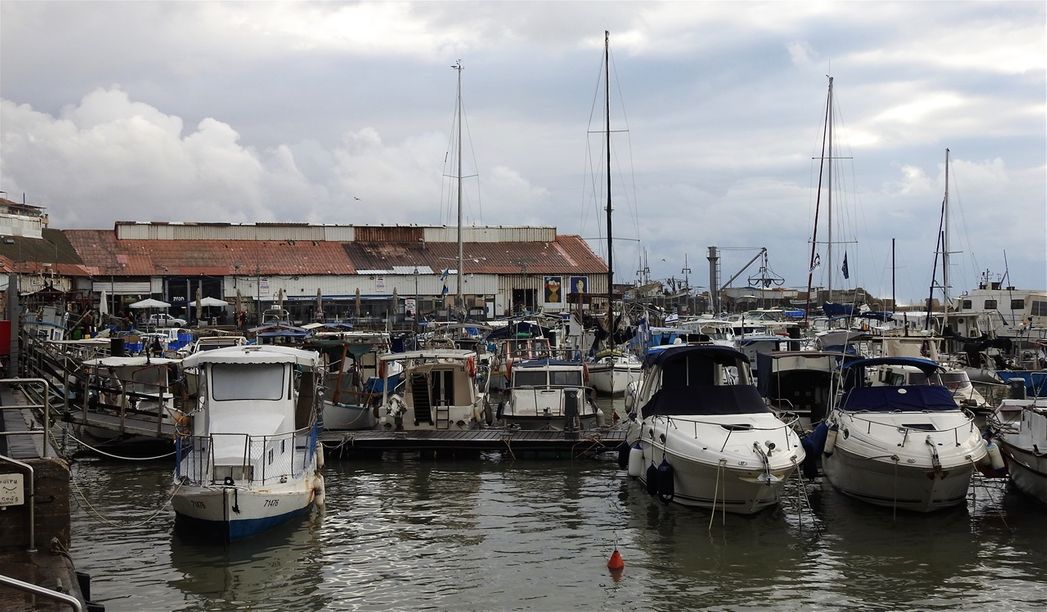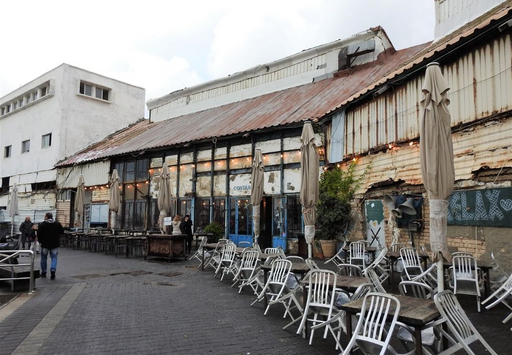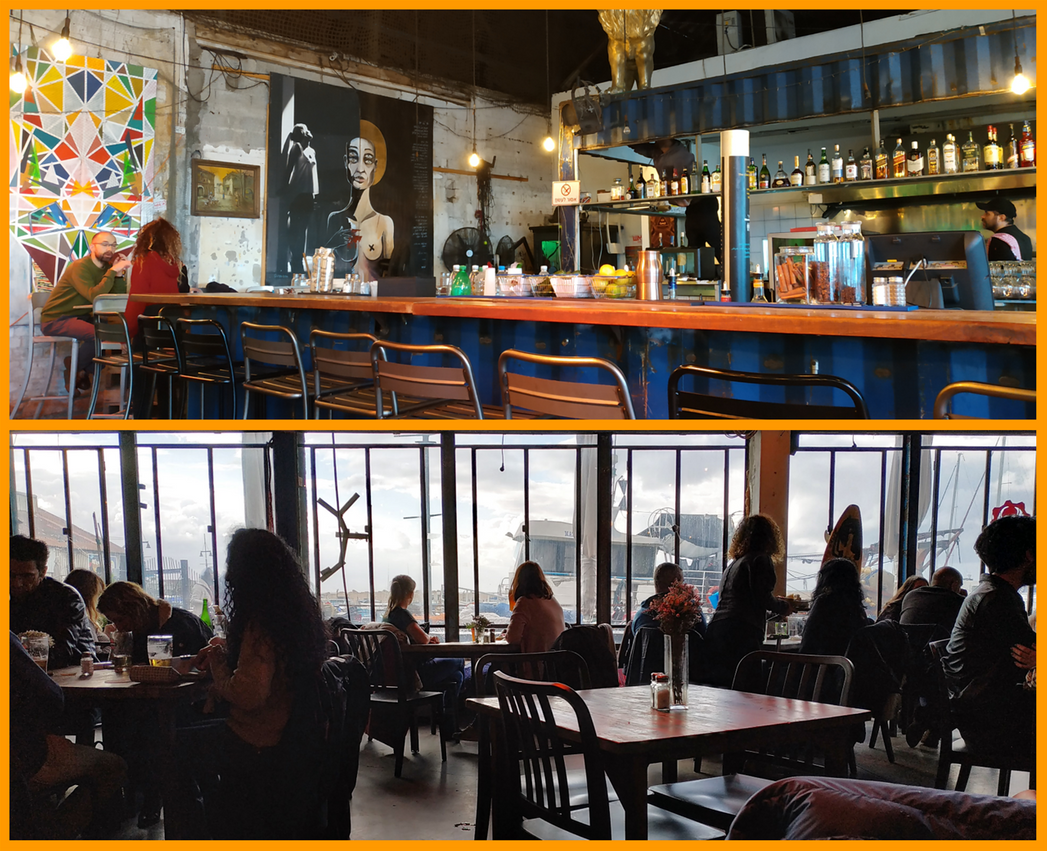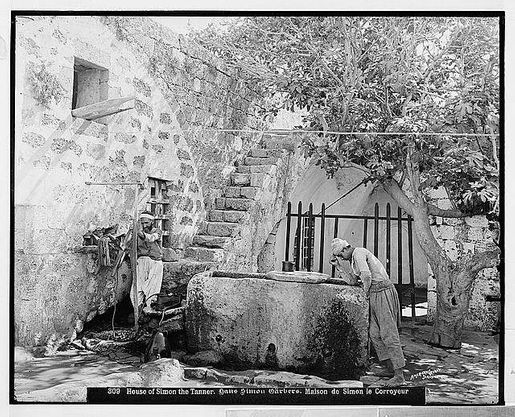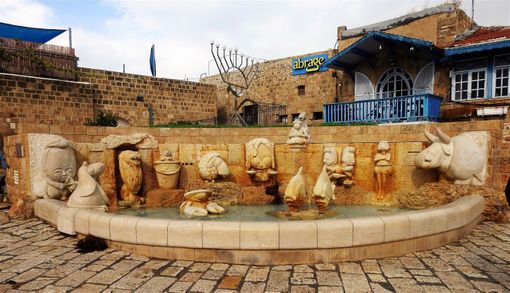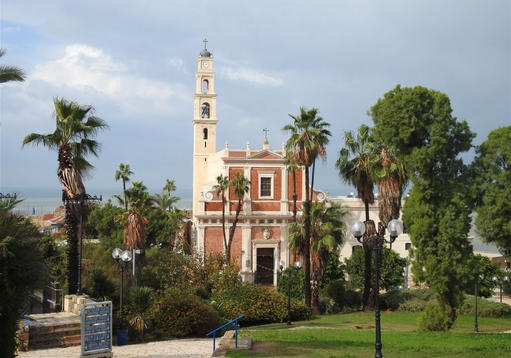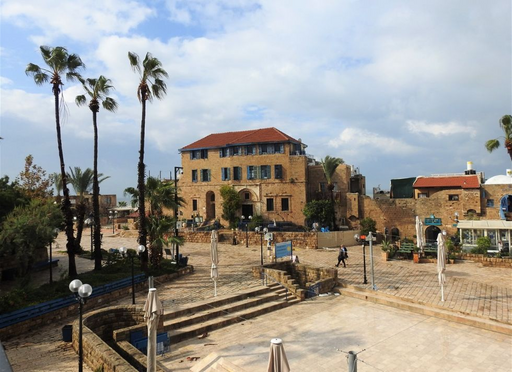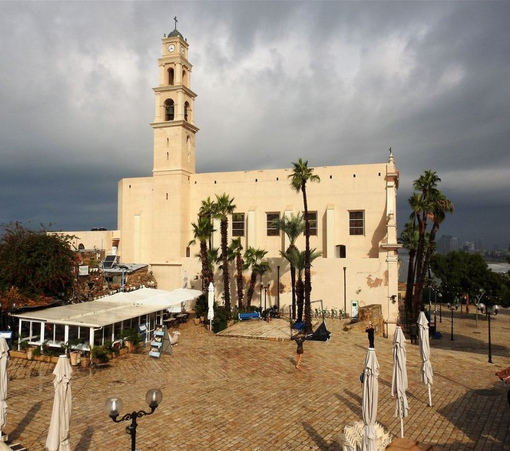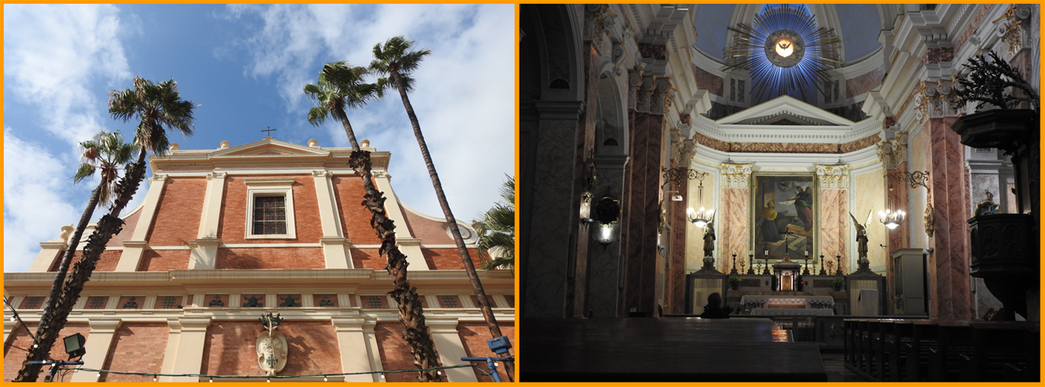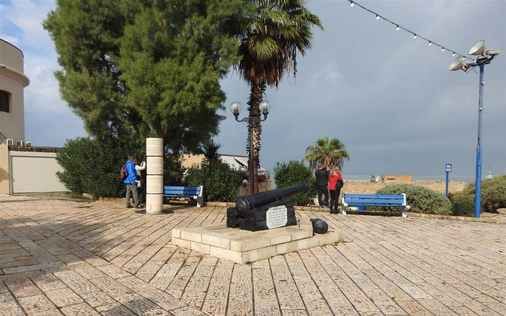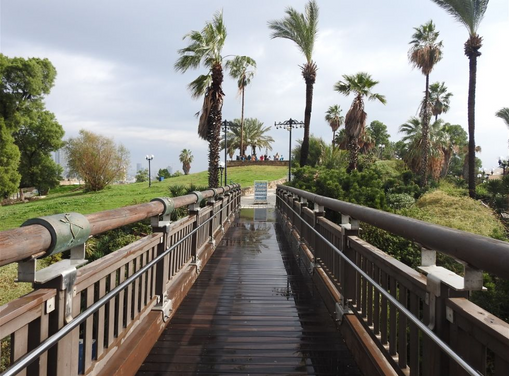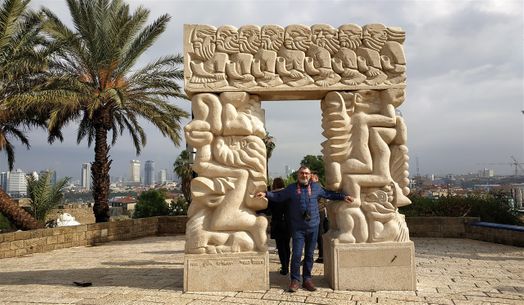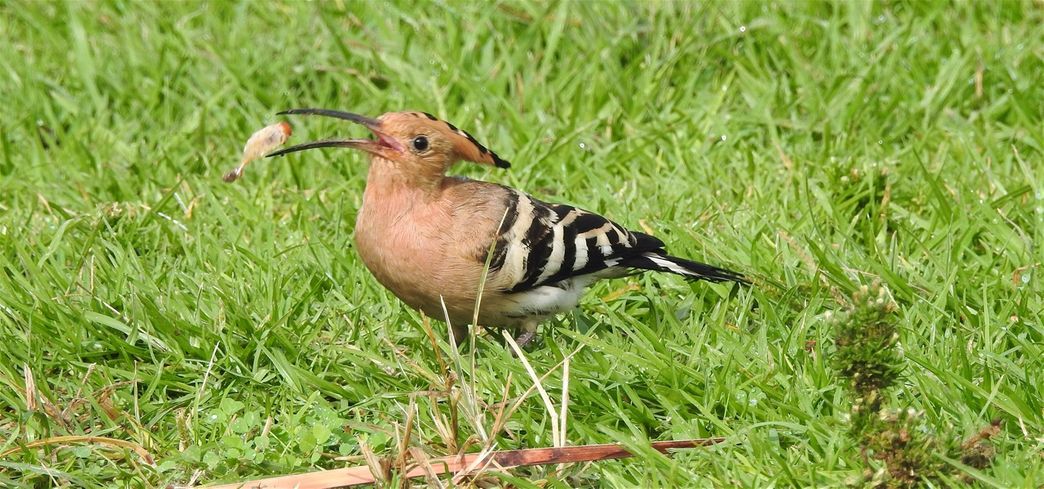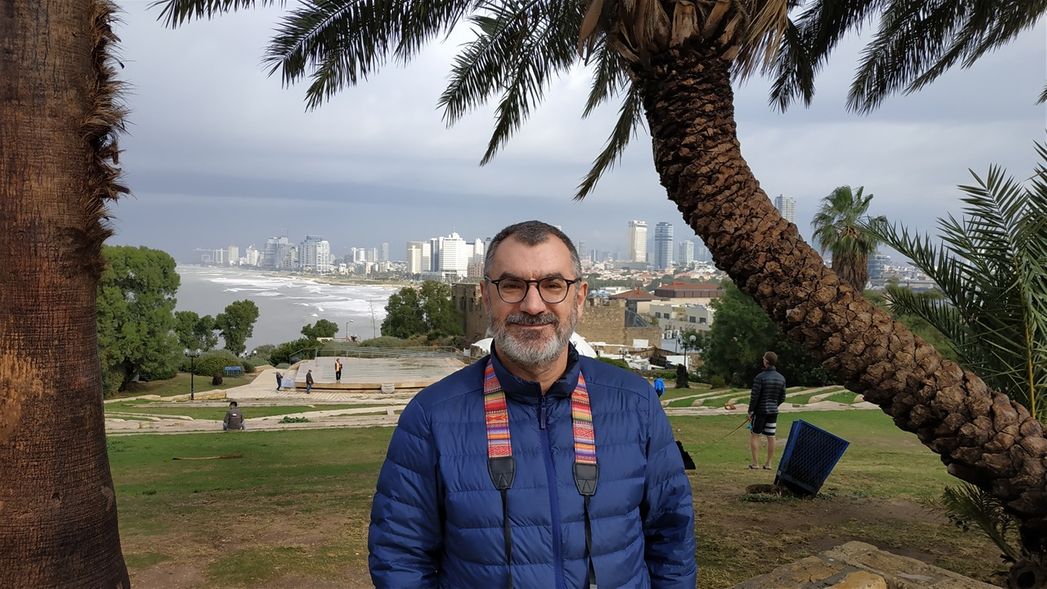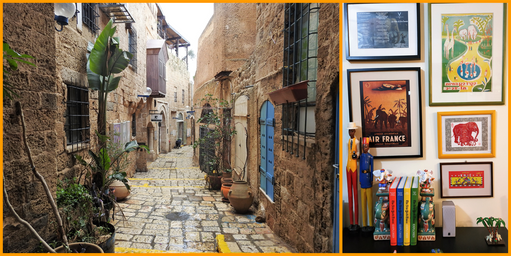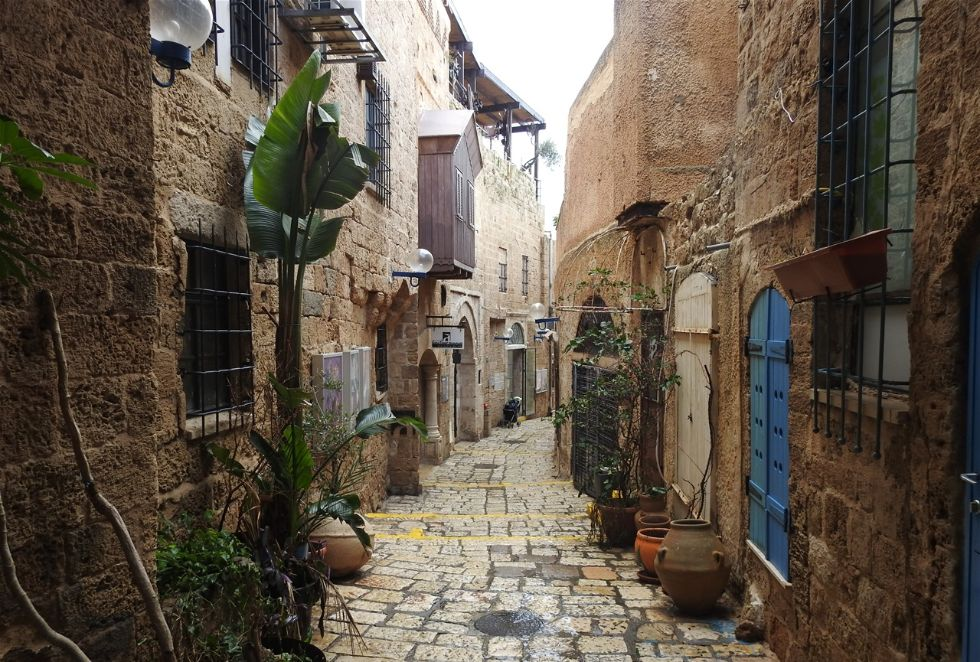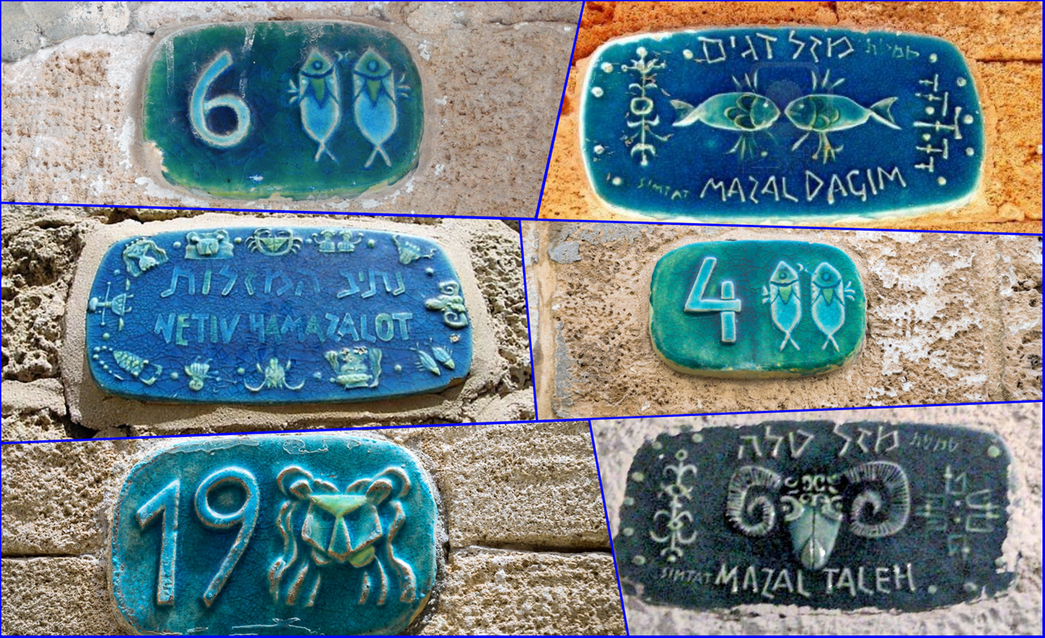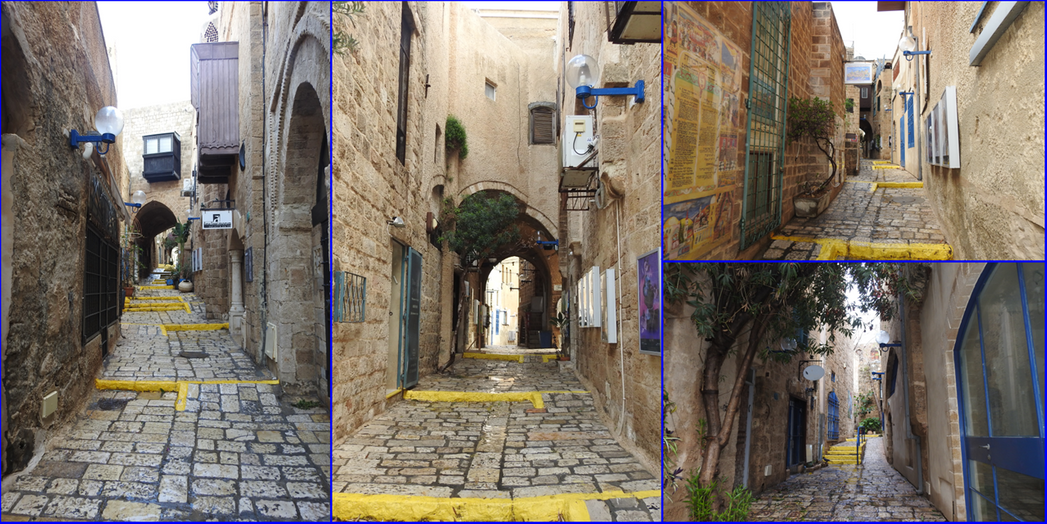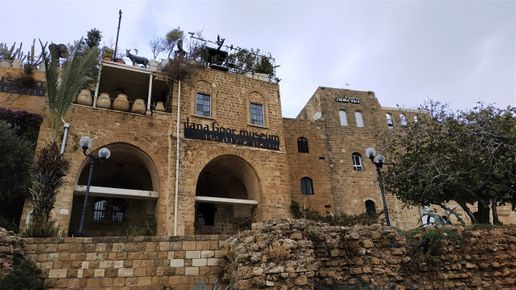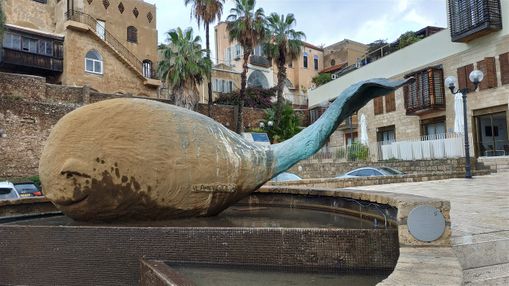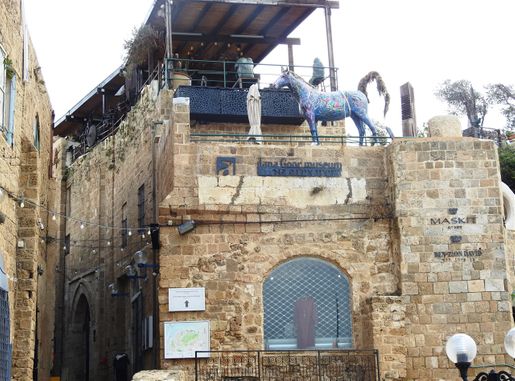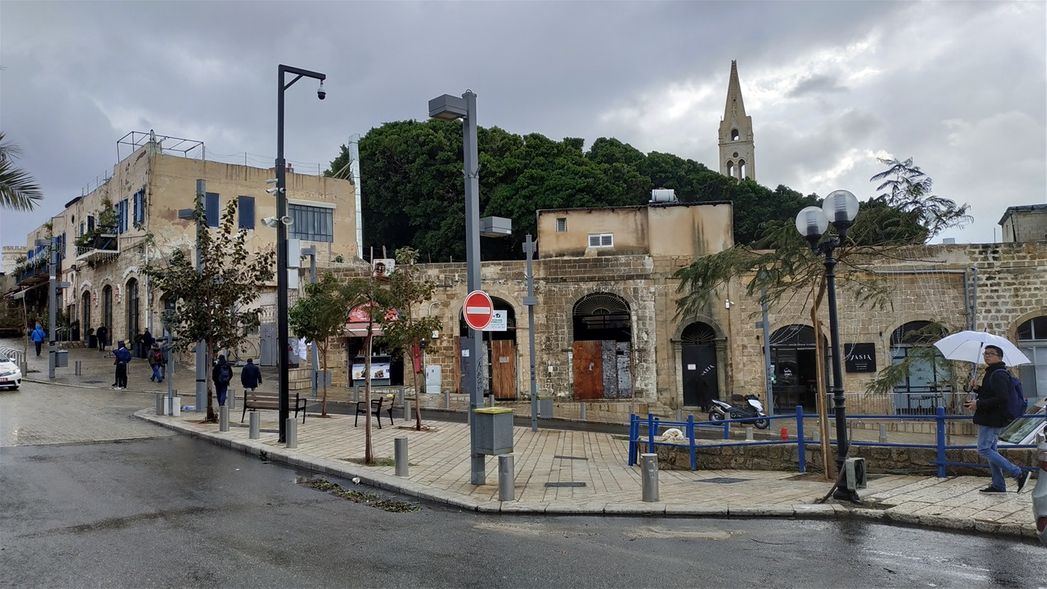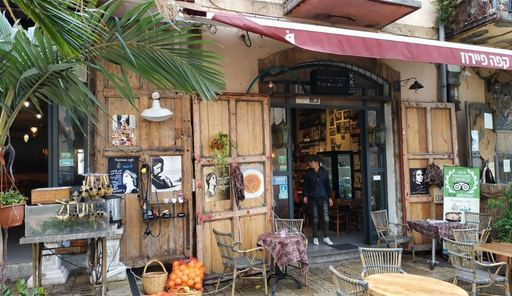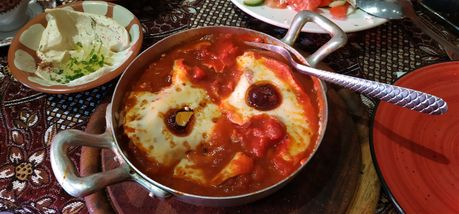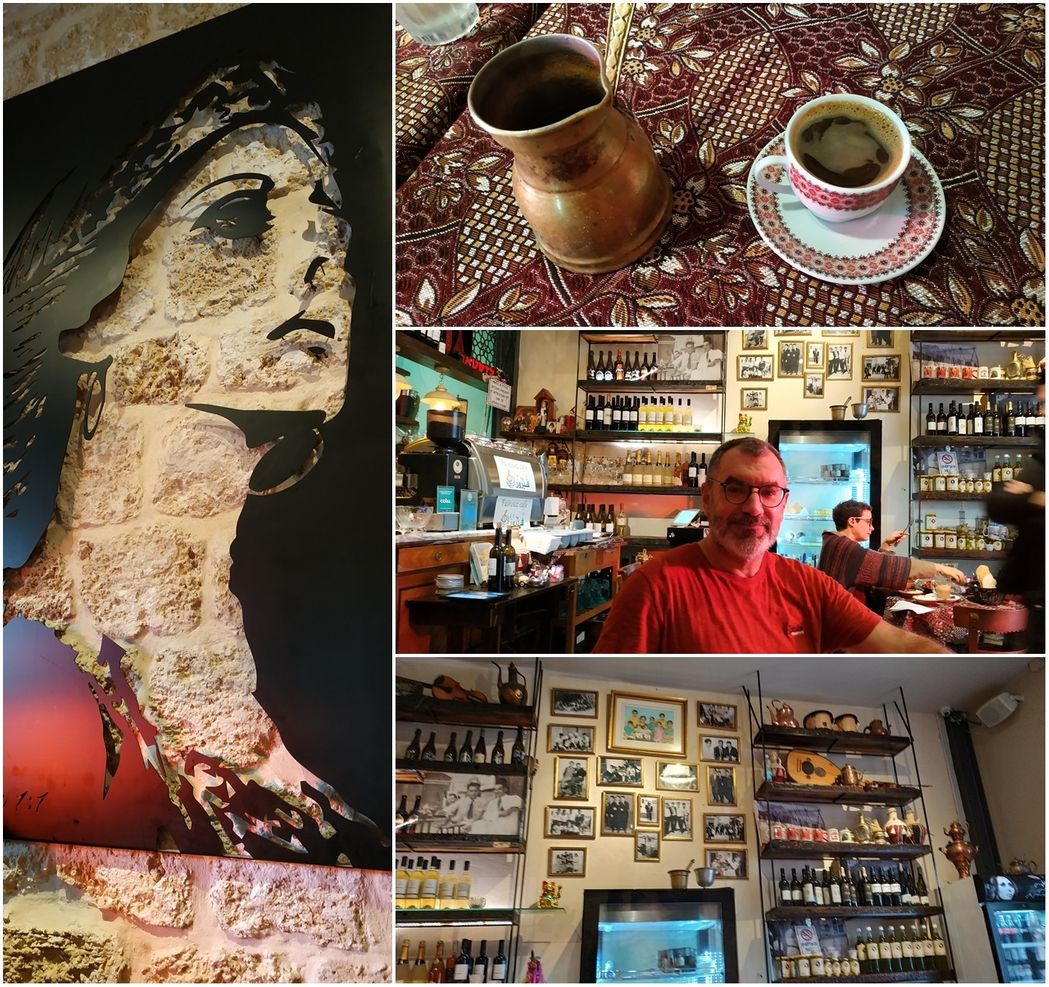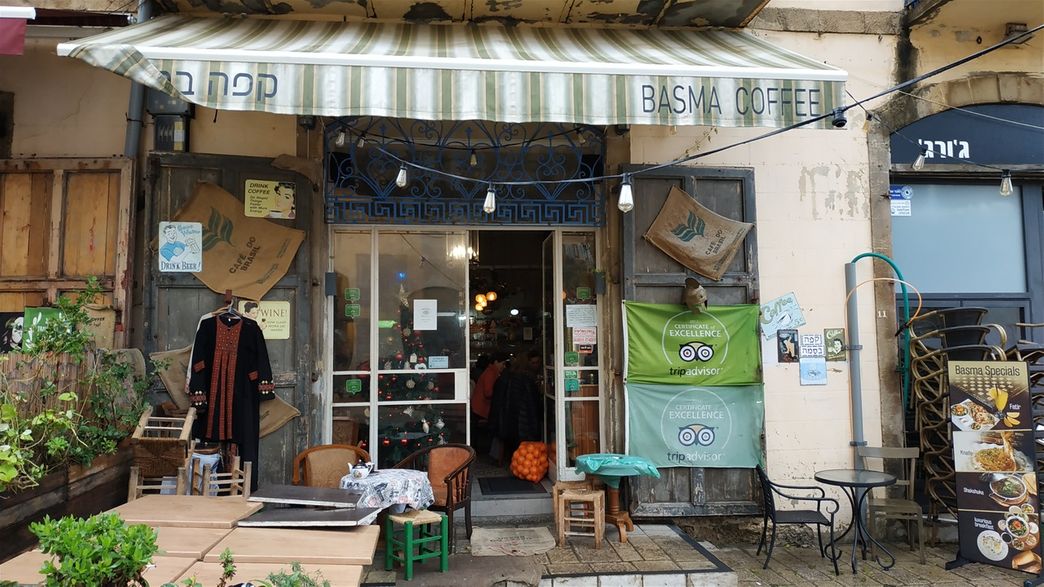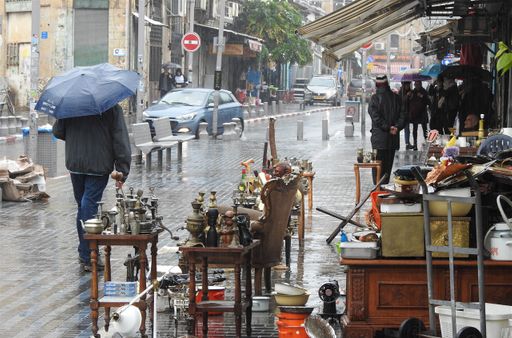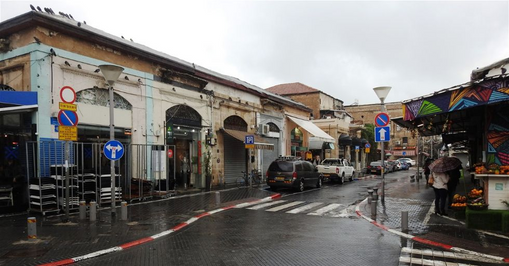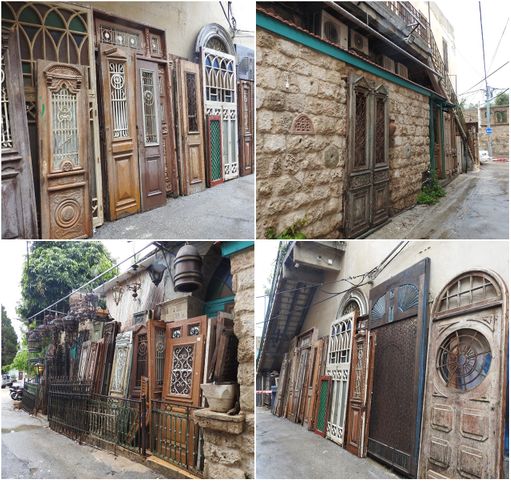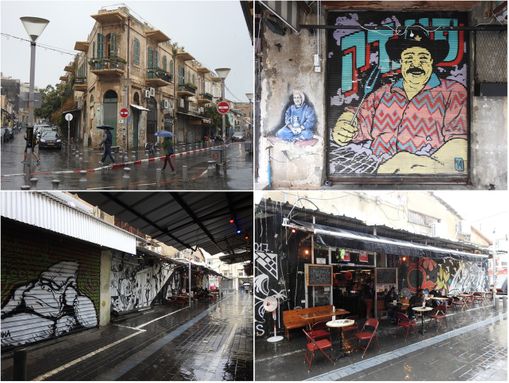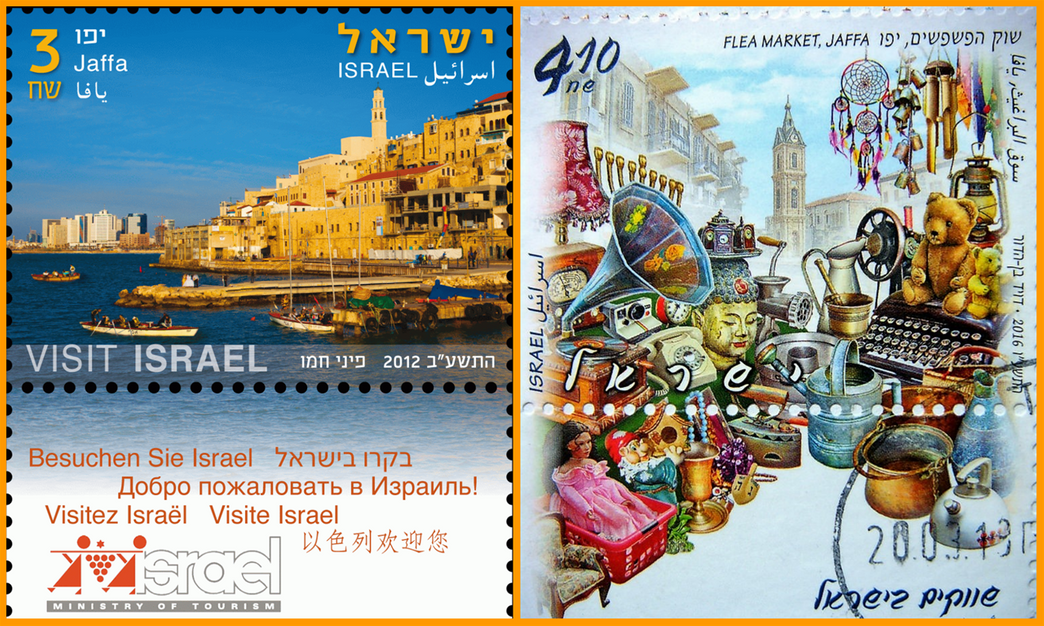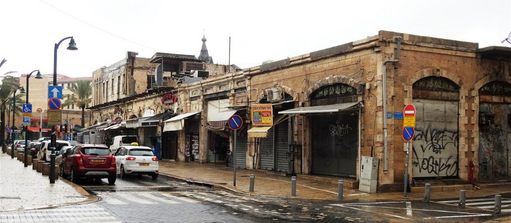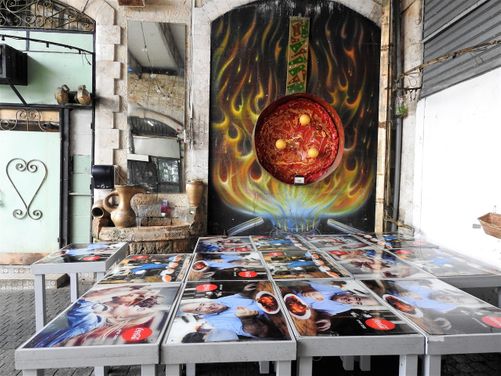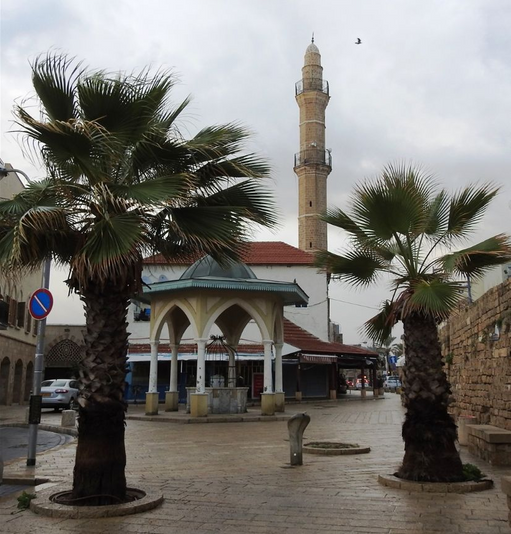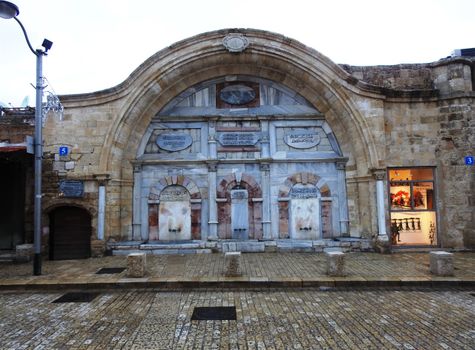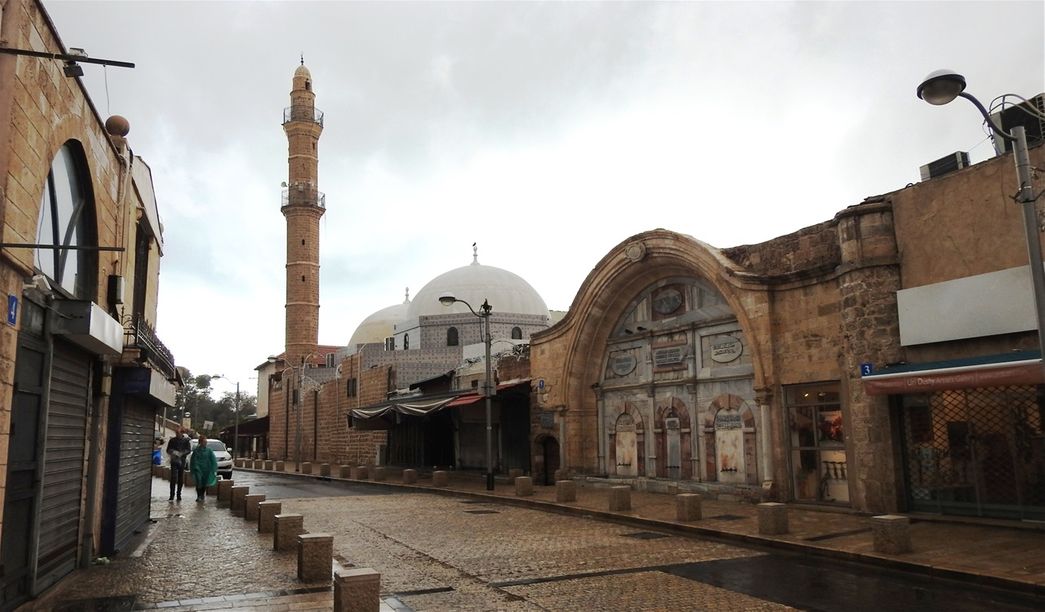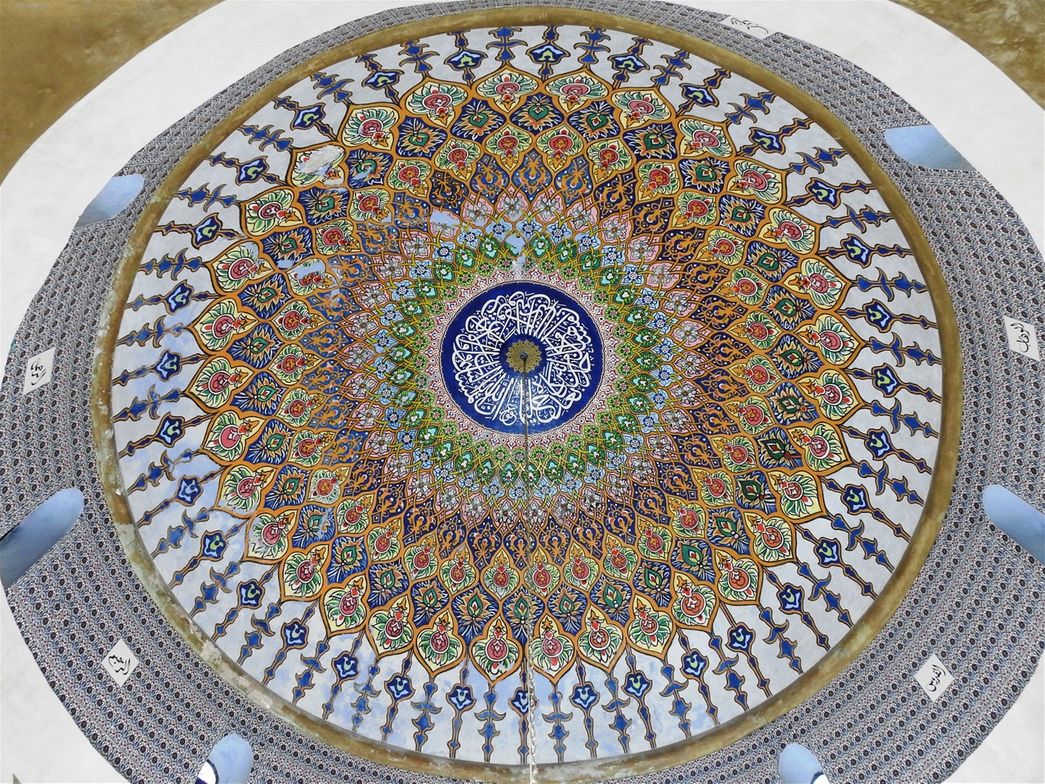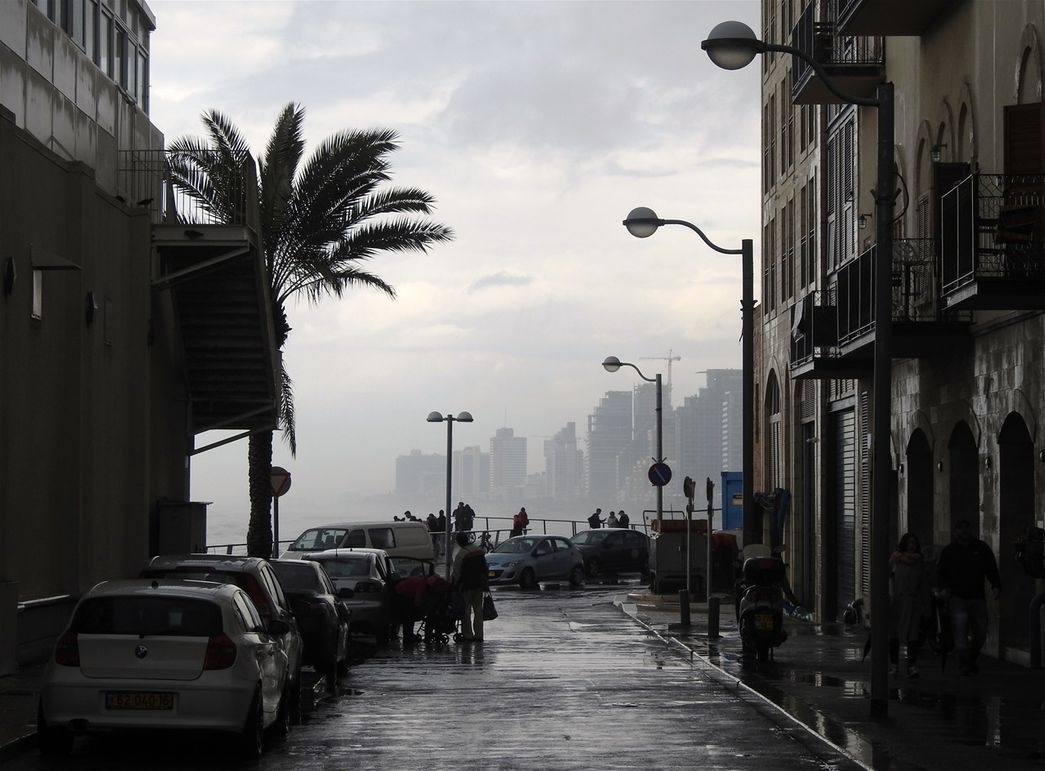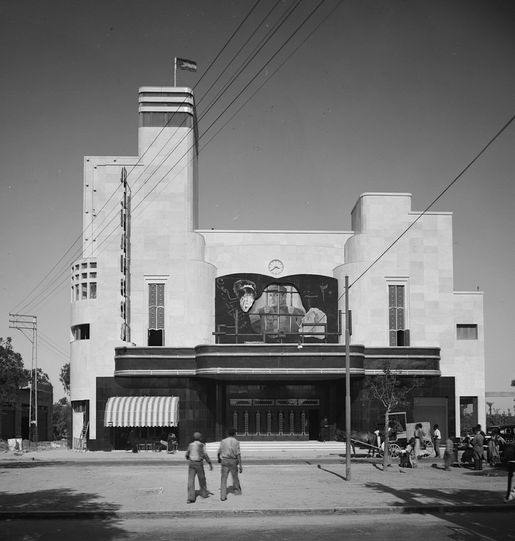Jaffa is the old sibling of Tel Aviv. Located just south of Tel Aviv, is the old city from where the Jews left to establish the new city, about a century ago. Jaffa is famous for its association with the biblical stories of Jonah, Solomon and Saint Peter as well as the mythological story of Andromeda and Perseus, and later for its oranges. The history of the area is very old and tumultuous.
Jaffa old harbor.
Origin of the name
Mythology says that the city is named for Yafet, one of the sons of Noah, who built it after the Flood. The Hellenist tradition links the name to Iopeia, or Cassiopeia, mother of Andromeda. Pliny the Elder associated the name with Iopa, daughter of Aeolus, god of the wind. The Palestinian geographer al-Muqaddasi referred to it as Yaffa.
Jaffa seen from Homat HaYam Promenade, Tel Aviv-Yafo.
How to go there
Old Jaffa is an awesome maze of architectural delights, amazing little galleries and studios, and cute little eateries. And whereas Tel Aviv offers a somewhat surprising European flavor, there’s no mistaking the Middle East atmosphere and vibe in Old Jaffa.
It is very easy to get from Tel Aviv to Jaffa, on bus, taxi or even better on foot walking by the kilometers-long promenade.
Note: Bus No10 goes from Arlozorov Central Bus Station, all the way down the coast to Jaffa (and beyond), while No 100 follows the city tourist route and of course visits Jaffa as well.
A taxi ride from any part of central Tel Aviv to Jaffa costs no more than 10euros.
Check also my travelogue about Tel Aviv for more information on buses and moving around: Tel Aviv -Yafo
Retzif HaAliya HaShniya street in front of old Jaffa Harbor. Tel Aviv's skyline is in the background.
Jaffa's history highlights
• Jaffa is mentioned in Bible as the port-of-entry for the cedars of Lebanon for Solomon's Temple and later for the Second Temple of Jerusalem.
• It was a port of the Seleucid Empire during the Hellenistic period.
• Conquered by the Romans and later was part of the Byzantine Empyre, before it was conquered by the Arabs, in 636.
• Jaffa was captured by the christian crusaders in June 1099 during the First Crusade, and was the center of the County of Jaffa and Ascalon, one of the vassals of the Kingdom of Jerusalem. Saladin conquered Jaffa in 1187. The city surrendered to King Richard the Lionheart on 10 September 1191. Despite efforts by Saladin to reoccupy the city in July 1192 (Battle of Jaffa) the city remained in the hands of the Crusaders. On 2 September 1192, the Treaty of Jaffa was formally signed, guaranteeing a three-year truce between the two armies. Frederick II fortified the castle of Jaffa and had two inscriptions carved into city wall, one Latin and the other Arabic.
A Victorian illustration of Richard I at the Battle of Jaffa, 1192.
• Jaffa was captured by the christian crusaders in June 1099 during the First Crusade, and was the center of the County of Jaffa and Ascalon, one of the vassals of the Kingdom of Jerusalem. Saladin conquered Jaffa in 1187. The city surrendered to King Richard the Lionheart on 10 September 1191. Despite efforts by Saladin to reoccupy the city in July 1192 (Battle of Jaffa) the city remained in the hands of the Crusaders. On 2 September 1192, the Treaty of Jaffa was formally signed, guaranteeing a three-year truce between the two armies. Frederick II fortified the castle of Jaffa and had two inscriptions carved into city wall, one Latin and the other Arabic.
• In 1268, Jaffa was conquered by Egyptian Mamluks, led by Baibars.
• In 1515, Jaffa was conquered by the Ottoman sultan Selim I.
• On 7 March 1799 Napoleon captured the town in what became known as the Siege of Jaffa, ransacked it, and killed scores of local inhabitants as a reaction to his envoys being brutally killed when delivering an ultimatum of surrender. Napoleon ordered the massacre of thousands of Muslim soldiers who were imprisoned having surrendered to the French. Many more died in an epidemic of bubonic plague that broke out soon afterwards. The event is immortalized in Antoine-Jean Gros painting “Bonaparte visitant les pestiférés de Jaffa” (1804).
Antoine Jean Gros' painting ("Bonaparte visitant les pestiférés de Jaffa") of Napoleon visiting the bubonic plague victims in Jaffa.
• In 1920 Jaffa became part of the Mandatory Palestine, a geopolitical entity established between 1920 and 1923 in the region of Palestine as part of the Partition of the Ottoman Empire under the terms of the British Mandate for Palestine. The British remained in the region and when they left after the WW II, the city for some years was the center of dispute between the Israelis and the Arabs.
• Finally, in 1950 Jaffa was unified with Tel Aviv to form the Tel Aviv-Jafo metropolis of today.
A walk around Old Jaffa.
Jaffa of today is a big city and its modern parts have been extended much further that its historical boundaries. Most of the modern parts of the city have no interest to the visitor, so during a day trip one visits only the its old part restricted on the historical tell (*) and around it.
(*) Tell (in the Middle East) means an artificial mound formed by the accumulated remains of ancient settlements. (From the Arabic ward 'tall=hillock').
A walk around Old Jaffa (red line).
the Clock Tower
Τhe Clock Tower.
Start your walk in old Jaffa from the Clock Tower, one of the most distinctive landmarks of the area. The tower, which was built in 1903, is one of seven clock towers built in Palestine during the Ottoman era and stands in the middle of Yefet street at the northern entrance of Jaffa.
The tower, which is made of limestone, incorporates two clocks and a plaque commemorating the Israelis killed in the battle for the town in the 1948 Arab-Israeli War.
The construction of the tower was initiated by Moritz Schoenberg, a Jewish businessman and clockmaker to commemorate the silver (25th anniversary) jubilee of the reign of the Ottoman Sultan Abdul Hamid II.
2004 Israeli stamps depicting five of the Ottoman clock towers, among them the Jaffa one.
Saraya
Only the governor’s residence and a small section of the government building survived the blast. The Governor’s residence underwent renovation and its façade was restored including restoration of the government building’s four pillars.
(*) Lehi was a Zionist paramilitary organization (1940-1948) founded by Avraham Stern in Mandatory Palestine. Its avowed aim was to evict the British authorities from Palestine by resort to force, allowing unrestricted immigration of Jews and the formation of a Jewish state, a "new totalitarian Hebrew republic".
The Sea Mosque.
Further south on the promenade (HaAliya HaShniya Street) stands the Armenian Convent of Saint Nicholas. Some slippery stairs lead up to the small courtyard of the convent and the church. An “inappropriate advice”: the toilets of the courtyard are super-clean and free to use!
Opposite the Clock Tower, on David Razi'el St, stands the Saraya, built to replace the Old Saraya, located on Mifrats Shlomo Promenade (under the open air theater at the northern slopes of Peak Park), which now houses a Museum. Saraya was Ottoman governor’s residence and government building. It inaugurated in 1897 as part of a new administration complex constructed outside the Jaffa fortification walls.
During the British rule, the building used as an administrative municipal building. On January 4, 1948, the building was blown up by members of the Lehi (*).
What has been remained of the government building of the Old Saraya.
Sea Mosque
Leave the big roundabout (Yossi Carmel square) and walk (western bound) to the promenade. From this part of the promenade you can enjoy spectacular views of both Tel Aviv and Old Jaffa by the sea. Pass by Al Bahr Mosque, the Sea Mosque, which is the oldest extant mosque in Jaffa. The Sea Mosque, which has been used by sailors and fishermen, has been recently renovated.
The Armenian Convent of Saint Nicholas.
The Northern part of the old Jaffa harbor.
Jaffa harbor, The Andromeda rock & Jaffa Light
Now you have a good view of the (old) Jaffa Harbor with the multicolor fishing boats. At the extend of the breakwater (towards Tel Aviv) there is an outcrop of rocks in the sea. On the biggest of these rocks stands an Israeli flag. According to the Greek traveler Pausanias, the geographer Strabo and the historian of the Jews Josephus, this rock is where Andromeda was chained as a sacrifice to a sea monster, but was saved from death by Perseus.
The Andromeda rock.
Perseus and Andromeda by Rubens - 1622 (Hermitage Museum).
In Greek mythology, Andromeda is the daughter of the Aethiopian king Cepheus and his wife Cassiopeia. When Cassiopeia's hubris leads her to boast that Andromeda is more beautiful than the Nereids (50 daughters of Poseidon), Poseidon sends the sea monster Cetus to ravage Andromeda as divine punishment. Andromeda is chained to a rock as a sacrifice to a sea monster, but is saved from death by Perseus.
Opposite the first harbor pier, there is an entrance to the wall and a steep staircase leads inside the Old Jaffa itself. Instead going up the stairs continue a bit further by the harbor.
The entrance to Old Jaffa from the harbor.
The Jaffa Light.
Before arriving to the old warehouses, at the top of the hill, on your left, stands a lighthouse, known as Jaffa Light. It operated between 1865 and 1966, although it is still used as a daylight navigation aid. Jaffa Light was built by French engineers, in 1865, as part of operations carried out by the Ottoman authorities to improve the port facilities, mainly due to the increase in export of citrus fruit, and especially oranges, the well-known "Jaffa oranges".
In 1936 the British expanded the harbor and rebuilt the lighthouse. In 1965 Port of Ashdod was built, replacing Jaffa Harbor and a consequence Jaffa Light shut down one year later.
2009 Israeli stamp depicting Jaffa Light.
The old Jaffa Harbor and the warehouses, which have been transformed into bars and restaurants.
Container Bar-restaurant
The old warehouses of the port have been converted to restaurants and bars. This is the best place to quench your thirst or have lunch. We had a mint tea at Container Bar Restaurant. A very interesting, big space, which used to be a high ceiling warehouse, has been transformed into an art place, where you can enjoy your drink or food.
The Container Bar-restaurant.
Inside the Container Bar-restaurant.
House of Simon the Tanner. Picture between 1898 and 1914 - Library of Congress.
Continue uphill till you reach to a big open space at the top of the hill, which is Kdumim Square (Kdumim Kikar). "Kdumim Square" is filled with archaeological remains, restaurants, nightclubs, galleries, souvenir shops and a visitors center (a museum and a tourist information), where visitors can find many archeological findings from various periods. The visitors center showcases the history of the city during the Roman period.
The Fountain of "Zodiac Signs" at Kdumim Square. Throw a coin into the fountain and maybe your wish comes true.
St. Peter's Church
St. Peter's Franciscan Church dominates the square, and since the large church is located on the hill so near the shore, has historically dominated the view of Jaffa from the sea, thus serving as a beacon to pilgrims, signaling that the Holy Land is near. The church was constructed on its present location because of the significance Jaffa has to Christianity. It was in Jaffa that Saint Peter raised Tabitha, one of Jesus' disciples, from the dead according to the Acts of the Apostles. The church is dedicated to him.
St. Peter's Church seen from Peak park.
House of Simon the Tanner & Kdumim Square
Back to the stairs in the wall and up inside the narrow streets of old Jaffa. In one of these narrow streets stands the House of Simon the Tanner…so, be one of many Christian pilgrims and sightseers who visit it. This is a house, where Saint Peter stayed during his missionary activities of the early Christian faith. This act of Peter shows that the early Christians' embraced people of all professions, like the humble tanning profession.
Kdumim Square.
The Fountain of "Zodiac Signs", which was made by sculptors Varda Ghivoly and Ilan Gelber in 2011, combines effects of water, lighting and stonework. The findings found under the fountain corroborate an old legend mentioning the existence of a magical wishing well located in this very place. Throw a coin into the fountain and maybe your wish comes true. Maybe you wish for this tacky fountain to disappear!
St. Peter's Church seen from Kdumim Square.
The church was built in 1654 in dedication to Saint Peter over a medieval citadel that was erected by Frederick I and restored by Louis IX of France at the beginning of the second half of the thirteenth century. However, in the late eighteenth century the church was twice destroyed and consequently twice rebuilt. The current structure was built between 1888 and 1894 and most recently renovated in 1903.
St. Peter's Church façade and interior.
Outside the church stands one of the many cast-iron cannons, which were found during excavations at Jaffa Port. The cannons were imported by the Ottoman government in the early 18th century to protect the city from Bedouin raids by land and pirates by sea, and also to enhance Jaffa’s stature. They stood on the city walls until those walls demolished in the second half of the 19th century. Behind the cannon stands a monument of the Jewish settlement of Jaffa.
The Wishing Bridge
The cast-iron cannon and the monument of the Jewish settlement of Jaffa outside St. Peter's Church.
The Wishing Bridge overlooks the sea, connecting the city's Peak Park with Kdumim Square. It is decorated with the 12 zodiac signs made in bronze, the pinnacle of the astrological theme found all across Old Jaffa, especially in street names. The bridge is inspired by the local legend that if you gaze at the Mediterranean holding the right astrological sign, your wish will come true. At the entrance to the bridge is a stone mosaic of the zodiac.
The Wishing Bridge.
The statues along the bridge were sculpted by Esther Shlomo and Freddy Fabian, and the mosaic was created by Varda Ghivoly, Ilan Gelber and Navot Gil, all residents of Old Jaffa.
From Kdumim Square cross the Wishing Bridge and go up to the highest location of the Peak Park, where another tacky sculpture is erected: The Gate of Faith.
The Gate of Faith
The Gate of Faith sculpture consists of two 4-meter-tall pillars upon which rests a stone, also 4 meters in length, so it resembles a gate. The sculpted gate is the gate of entry to the Land of Israel, and represents the promise of the land to the Patriarchs – Abraham, Isaac, and Jacob.
On the two pillars appear the three Patriarchs – who received the promise – and the top stone signifies the beginning of that promise’s realization via the capture of Jericho and the Land of Israel by Joshua. The first pillar recounts the tale of the binding of Isaac. This is an extraordinary portrayal of the binding – Abraham is seen kneeling on the ram, and holding up his son Isaac.
The Gate of Faith sculpture.
Isaac lies with his face, resembling Abraham’s, turned upward. The second pillar depicts Jacob’s dream, where the land was promised to his offspring. Jacob rests on the land and the stone is under his head. Above him are two angels, one ascending and one descending, facing opposite directions, and the rhythm of the wings creates an association with a ladder. The top beam represents the realization and depicts the capture of Jericho. The priests surround the city of Jericho, holding horns and are seen carrying the Ark of the Covenant.
The Peak Park hoopoe.
Forget the legends, the sculptures, the churches and the archeological sites around the Peak Park. The real star here is the view. Enjoy!
At the northern slopes of the park there is an open theater, which is used for shows and plays during summer period. The auditorium is so oriented that viewers have great views towards Tel Aviv.
The views from Peak park are just gorgeous! Behind gorgious me, one can see the open theater used for shows and plays. The auditorium is positioned in such way, so the audience has great views towards Tel Aviv.
South of the park, there is a labyrinth of narrow streets full of art galleries and little shops. From a gallery in these streets, about ten years ago during my first visit in the area, I bought a beautiful old print of an Israeli zoological park. The framed print is hanging on one of my walls in my sitting room in Athens.
The zoo print hanging on my wall (top right).
The old town is a labyrinth of narrow streets full of art galleries and little shops.
Note the street names with ceramic street markers of Zodiac signs.
While in Old Jaffa note the ceramic street markers of Zodiac signs.
Wander in these streets going up and downhill before heading to Segev street from the side of the harbor and the Ilana Goor Museum.
The narrow streets of Old Jaffa, south of Peak park.
Ilana Goor Museum
Ilana Goor Museum or Ilana Goor Residence and Museum was founded in 1995 by Ilana Goor, an artist, designer and sculptor. Its eclectic collection has been called an "artistic jungle", but Goor considers it to have been her own "university".
The museum has a collection of more than 500 works of art, either created by Ilana Goor or collected by her over a period of 50 years, either in Israel or during her travels around the world.
Ilana Goor Museum
The collection includes paintings, some 300 sculptures, video art, Ethnic Art from Africa and Latin America, antiques, drawings and design objects. The building now housing the Ilana Goor Museum was originally erected in 1742. At that time it was used as an inn for Jewish pilgrims travelling to Jerusalem. The inn, located outside the city walls, served as a shelter, protecting the pilgrims from robbers.
In the second half of the 19th century it became a factory for olive oil soap. Yet another century later, in 1949 and thus by now within the newly created State of Israel, a community of Libyan Jews were using part of the building as a synagogue. Ilana Goor first purchased part of the building in 1983, and then eventually also the rest of it, with the intention of converting it to a museum dedicated to her art collection. The museum was inaugurated in September 1995.
“The Smiling Whale”.
Ilana Goor Museum.
“The Smiling Whale”
You do not have to enter the museum to admire a piece of work by Ilana Goor, because a bit further down Segev street, which is named Luis Pasteur street at that point, stands “The Smiling Whale” sculpture by the same artist.
Louis Pasteur Street.
Basma and Café Fairuz
Opposite the Smiling Whale do not miss to have an Arab/Turkish coffee or some snack at one of the two “traditional” cafés: Basma and Café Fairuz. I had some great brunch (delicious shakshuka*) at Café Fairuz. The place is dedicated to the Nouhad Wadie' Haddad, known as Fairuz, a Lebanese singer who is one of the most admired and influential singers in the Arab world.
Café Fairuz.
Shakshuka.
(*) Shakshuka, a North African dish of eggs poached in tomato sauce, means “mixture” in Berber languages, and as the name implies, it is a simple dish that anyone can make at home. Making it well, however, is a different matter.
Café Fairuz.
Basma cafe at Louis Pasteur Street.
Old Doors Shop
Continue on the Luis Pasteur street and at Yefet street turn left. At number 21 of Yefet street there is a very interesting shop, the Old Doors Shop. A huge selection of old doors and grilles are imported from Egypt, Turkey and Morocco by Ibrahim Abu Nassar and his son Mou-hamad. Every door and grille go through a total renovation which includes sanding down, painting, and adjustment to its final goal. Get inside, admire the collection and just think of the right place to put one of those beautiful doors.
Jaffa Flea Market.
The Jaffa Flea Market, or Shuk Hapishpishim is one of the highlights of the area with vendors selling products of any variety imaginable lining the sidewalks. Weaving your way through an array of treasure, junk, and daily basics, you’ll see everything from Judaica, Persian tiles, jewelery, old jeans, and Indian mildewed clothes. It’s an incredible cultural experience, where bargaining and haggling rule the day.
Jaffa Flea Market in a rainy day.
The Old Doors Shop, at number 21 of Yefet street.
Jaffa Flea Market
Continue further down Yefet street and turn right at Olei Zion street. This part of the old city is full of cafés, bars and restaurants. There are so many of them around and so attractive that you have the urge to visit every single of them. The main reason the area has been transformed into a food and drink paradise is the Jaffa Flea Market. Maybe the most interesting of the markets in the whole Tel Aviv-Yafo region.
Around Jaffa Flea Market.
The flea market itself is open Sunday to Thursday 10am to 6pm and Friday 10am to 2pm.
Unfortunately, when I visited the market was closed and it was downpouring, so I cannot really show you in pictures the colorfulness and the liveliness of this place.
Israeli postal stamps. The old Jaffa Harbor-2012 (left) and the Jaffa Flea Market-2016 (right).
“Dr Shakshuka”
After shopping therapy, find your way to Beit Eshel street and on your way back to Yefet street. Before going back to the Clock Tower visit “Dr Shakshuka” restaurant in the Greek Orthodox Market for a delicious lunch.
The Greek Orthodox Market.
Dr. Shakshuka's trademark is the personal frying pan.
Mahmoudiya Mosque & Fountain
Cross the Yefet street and finish your walk at Mifrats Shlomo Promenade, home of the Mahmoudiya Mosque, the largest Mosque in Jaffa. The mosque was built by Abu Nabbut, the governor of Jaffa, over an ancient mosque. It is composed of a complex of buildings arranged around two large courtyards and a third, smaller, courtyard. The buildings, gates, and courtyards were built at different stages throughout the 18th and 19th centuries when the area was under Ottoman rule. The entrance-in-use of the mosque is on Russlan Street. On Mifrats Shlomo Promenade stands the impressive “sebil” (*) Fountain at Mahmoudiya Mosque. Just in front of the entrance of the mosque (on Russlan street) stands a recently restored ״sebil” kiosk-well.
Gabso (a.k.a. Dr. Shakshuka) is a celebrity chef known for his North African home-cooking style which includes dishes like couscous, mafroum, chraimeh and lamb shawarma…and of course shakshuka.
His trademark is the personal frying pan in which he serves each shakshuka. Gabso, a Libyan Jew, whose parents immigrated in Israel in the 50s, is a legend of Jaffa. The recipe he perfected on a portable burner in prison earned him the nickname Dr. Shakshuka, which one of the inmates made up. Gabso, use of filfel chuma, the hot sauce of Libyan Jewish cuisine, is one of the little “secrets” of his success.
Mahmudiyya Mosque seen from Russlan street. The entrance to the mosque can be seen at the left side. In the foreground stands a typical sebil kiosk-well.
The Fountain at Mahmoudiya Mosque, at Mifrats Shlomo Promenade.
(*) A sebil is a small kiosk where water is freely dispensed to members of the public. Historically, it is a structure of both civic and religious importance in Muslim cities, most characteristically under the Ottoman Empire. It is sometimes also used to refer to simple fountains for drinking water. Sebils were built at crossroads, in the middle of city squares, and on the outside of mosques and other religious complexes throughout the Ottoman Empire to provide drinking water for travelers and enable ritual purification before prayer.
Mifrats Shlomo Promenade, home of the Mahmoudiya Mosque and Fountain.
The inside of the dome of the Mahmoudiya Mosque.
Russlan street provides the perfect frame for Tel Aviv skyline.
Alhambra Cinema
If you have some extra time to spare, there is a building outside the typical walk around Old Jaffa which is worth a visit. The Art Deco Alhambra Cinema is on Jerusalem Boulevard. It was named after the Alhambra palace in Granada, a popular name for theaters and cinemas around the world. The cinema opened in 1937 and was one of the biggest and luxurious cinemas in Palestine. It was also used as a theatre hall and hosted famous artists such as Umm Kulthum, Farid al-Atrash and Leila Mourad. After the 'Israeli War of Independence' (or the '1947–49 Palestine War', as it is also known) it was reopened under the name "Yafor Cinema".
On 1963 it was renamed again as "Alhambra". On the late 70's the building was abandoned and partly used. In 2010 it underwent refurbishment and today it's the center of the Scientology organisation in Israel.
The Alhambra Cinema is an Art Deco building on Jerusalem Boulevard.

